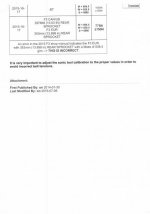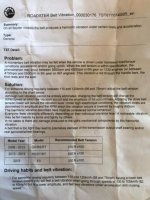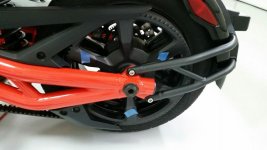I have done comparison belt tension tests with my Gates Sonic gauge and a Krikit ll gauge and am happy with the results of the Krikit so don't stop using it if that's all you have.
Anyone that is trying to use the Krikit l on the Spyder belt don't it will not read high enough, plus it is not wide enough for a 28mm belt the Krikit ll puts pressure across the full width of the belt.
2015-16-17 the belt tension should be set to 775N +/- 150N
The correct settings for the Gates Sonic Tension Meter should be set to:
M= 008.0 W= 028.0 S= 0980
Unit Conversion Formulas
lbf x 4.4482 = N N x 0.2248 = lbf
lbf x 0.4536 = kgf kgf x 2.2046 = lbf
N x 0.1020 = kgf kgf x 9.8067 = N
lbf = Pounds force
N = Newtons force
kgf = Kilograms force
Inches x 25.4000 = mm
mm x 0.0394 = inches
mm = Millimeters
Anyone that is trying to use the Krikit l on the Spyder belt don't it will not read high enough, plus it is not wide enough for a 28mm belt the Krikit ll puts pressure across the full width of the belt.
2015-16-17 the belt tension should be set to 775N +/- 150N
The correct settings for the Gates Sonic Tension Meter should be set to:
M= 008.0 W= 028.0 S= 0980
Unit Conversion Formulas
lbf x 4.4482 = N N x 0.2248 = lbf
lbf x 0.4536 = kgf kgf x 2.2046 = lbf
N x 0.1020 = kgf kgf x 9.8067 = N
lbf = Pounds force
N = Newtons force
kgf = Kilograms force
Inches x 25.4000 = mm
mm x 0.0394 = inches
mm = Millimeters



